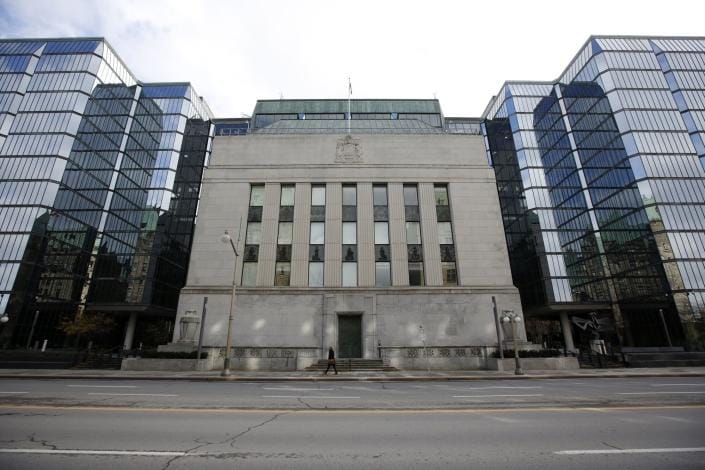Bank of Canada to Start Jumbo Rate Cuts by December, CIBC Says
One of the country’s biggest lenders says the Bank of Canada will accelerate the pace of monetary easing in order to stave off recession.

One of the country's major financial institutions predicts that the Bank of Canada will accelerate its monetary easing to avoid a recession. The Canadian Imperial Bank of Commerce (CIBC) forecasts that under Governor Tiff Macklem’s leadership, the central bank will cut the policy rate by 50 basis points at each of its meetings in December and January. According to CIBC's new projections released Thursday, the easing cycle is expected to conclude next June with a policy rate of 2.25%. This pace of reductions is more aggressive than what most economists anticipate, as indicated by a Bloomberg survey from the previous month.
“It really is time to declare victory in the battle against inflation and get the economy moving again,” said Avery Shenfeld, CIBC’s chief economist, in a phone interview. “There’s no reason not to speed up the process of getting interest rates down materially.”
This revised forecast comes amid increasing concerns about the weakening Canadian labor market and economic growth. Recent job data revealed that the economy added 22,100 jobs in August, but despite the lack of widespread layoffs, the unemployment rate unexpectedly rose to 6.6%.
Shenfeld noted that the increase in joblessness is primarily among young Canadians and newcomers, though it is beginning to affect prime-age workers as well. He suggested that Canada’s unemployment rate might climb to 6.8% or 6.9% in the coming months, though he does not consider this his base case. He also did not rule out a significant rate cut at the central bank’s next meeting on October 23.
The Bank of Canada began reducing the benchmark overnight rate in June, lowering it by 25 basis points at its July and September meetings, bringing it down from 5% to 4.25% at the peak of the rate hikes.
Last week, Governor Macklem reiterated that officials might cut rates by 50 basis points or more if inflation and economic conditions deteriorate faster than expected. However, he also mentioned that pausing cuts could be an option if economic growth or inflation proves stronger than anticipated.
The National Bank of Canada also predicts a 50 basis point cut by year-end. It anticipates that the central bank’s policy rate will reach 3.5% this year and conclude the easing cycle next year at 2.75%, which is considered the midpoint of the neutral rate — a level where borrowing costs neither stimulate nor restrict economic growth.
Former Bank of Canada Governor Stephen Poloz noted separately on Thursday that there might be a case for cutting rates below that midpoint if economic risks increase, to cushion the economy. While he stopped short of predicting a recession, Poloz advised BNN Bloomberg Television: “We should be prepared for one, not pretend it can’t happen.”
CIBC and National Bank are aligned with Citibank’s Veronica Clark, who was among the first to forecast a 50 basis point cut this cycle and expects one at the October meeting.
The remaining major Canadian banks — Bank of Montreal, Toronto Dominion Bank, Royal Bank of Canada, and Bank of Nova Scotia — still anticipate that Macklem will reduce borrowing costs in 25 basis-point increments.
“Rates are now too high for the economy’s own good and they can afford to front-load some of their reductions,” Shenfeld said, adding that officials might also aim to stimulate the stagnating housing market.
Canada’s economy grew at an annualized rate of 2.1% in the second quarter, largely driven by government spending and business investment. Consumption remains weak, supported mainly by high population growth. Earlier indicators suggest that economic growth will slow significantly in the latter half of 2024.
Shenfeld’s recommendation is partly based on the fact that Canada’s unemployment rate is higher than what it theoretically should be if the economy were in balance — a concept known as NAIRU (Non-Accelerating Inflation Rate of Unemployment). Although NAIRU is a standard economic measure, Bank of Canada staff research from 2022 advised against using it due to difficulties in accurate estimation.





